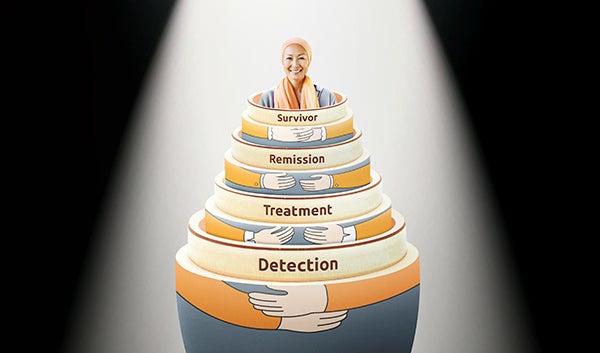Types Of Critical Illness & Definitions (Key Changes Since 2024)
In this article
Critical illnesses can strike without warning, and being aware of the types of critical illnesses and how to protect yourself financially is crucial for every Singaporean. In recent years, the cost of treating critical illnesses like breast cancer and prostate cancer has risen significantly, making it more important than ever to be well-prepared. With 46 Singaporeans being diagnosed with cancer every day, the risk of experiencing a critical illness is very real.
While Singaporeans may have MediSave and MediShield Life to pay for healthcare costs, both may be insufficient to fully address your healthcare needs — especially when it comes to critical illnesses. It is precisely for this reason that you can consider investing in ways to protect yourself against them financially. In this article, we’ll show you how.
Do You Know?
Critical illnesses can happen to anyone, and some illnesses are more common than others. Here are some essential facts to know:
- The "Big 3" critical illnesses — cancer, stroke, and heart attack — account for over 90% of all critical illness claims in Singapore. (Source: GenRe)
- Heart disease and stroke are amongst the leading causes of death in Singapore. (Source: Health Hub)
Most Common Types of Cancer (Male vs Female)
| Males | Females |
| 1. Prostate (16.8%) | 1. Breast (29.7%) |
| 2. Colon-rectum (16.3%) | 2. Colon-rectum (12.9%) |
| 3. Lung (13.5%) | 3. Lung (7.9%) |
Source: HealthXchange.sg
What Does Critical Illness Insurance Cover?
Critical illness (CI) is sometimes also referred to as dread disease or terminal illness (for end stage disease), depending on the insurer. These include major cancer, stroke with permanent neurological deficit and heart attack of specified severity. In 2024, the Life Insurance Association Singapore (LIA Singapore) released new definitions for critical illnesses, last updated in 2019. Here are the 37 critical illnesses covered under CI insurance as per LIA:
List of 37 Critical Illnesses
|
1. Major Cancer |
19. Alzheimer’s Disease / Severe Dementia |
Key changes in Critical Illness Definitions
In 2024, the Life Insurance Association Singapore (LIA Singapore) announced changes to the Critical Illness (CI) definitions and names. These changes were made to clarify the definitions, aligning them with advances in medical technology. In addition, the changes also aim to reduce ambiguity for policyholders making claims.
Here are some of the key changes:
- Major Cancer: Included the exclusion of pituitary neuroendocrine tumours (PitNET) along with the exclusion of Neuroendocrine tumors. PitNET covers pituitary adenoma which was not classified previously as Cancer and never intended to be covered under Major Cancer definition. PitNET is a recently recognised term, acknowledged by the WHO in 2022.
- Coma: Self-inflicted injuries are not intended to be covered. Added exclusion “or self-inflicted injuries” for clarity.
- Deafness (Irreversible Loss of Hearing): Expanded the meaning on what “Total” means for greater clarity - “the loss of hearing to the extent that the quietest sound that can be heard is 80 decibels or greater across all frequencies”.
- Added for Irreversible mean “40 decibels or lower”
- Open-Heart Heart Valve Sugery: Revised the header “Open Chest Heart Valve Surgery” to “Open-Heart Heart Valve Sugery” to provide clarity of the coverage scope (i.e. not requiring opening of chest wall but only opening of the heart)
- Added the definition for Open Heart Surgery to provide clarity to the scope of this coverage - the open-heart surgery refers to an incision on the heart for the direct visual replacement or repair of the heart valve abnormalities. As long as the surgery requires incision to the heart for the direct visual replacement or repair of heart valve, this definition is fulfilled. This revised definition no longer requires opening of chest wall.
- Use exclusions to ensure clarity of coverage that is not in scope (which were similarly not covered under 2019 definition):-
- The operation or procedure performed via endoscopic or keyhole surgery.
- The operation or procedure performed via catheterisation.
- Surgery to Aorta: Changed the Header from “Open Chest Surgery to Aorta” to original header “Surgery to Aorta”.
- Terminal Illness: Changed definition to more accurately specify the eligible circumstances for a claim under Terminal Illness
- Terminal illness means “any condition caused by illness or injury, where at the time of claim, despite all reasonable medical treatment, the Life Assured is expected to live for no more than 12 months.”
The specialist medical practitioner treating the condition must provide supporting evidence of the condition, possible medical treatment, the prognosis after undergoing the possible medical treatment, and certify that the Life Assured is expected to live for no more than 12 months despite all possible medical intervention. We reserve the right to appoint an independent medical specialist who is an expert in the condition to confirm the diagnosis and prognosis.
- Terminal illness means “any condition caused by illness or injury, where at the time of claim, despite all reasonable medical treatment, the Life Assured is expected to live for no more than 12 months.”
- Persistent Vegetative State (Apallic Syndrome): Removed “holding such appointment at an approved hospital” for clarity
- Other Serious Coronary Artery Disease: Revised the definition to provide a clearer understanding of the real intention and requirements before a claim is admitted.
Policyholders with existing critical illness plans bought before 30 June 2025 are not impacted by the new definitions.
How to Protect Yourself with Insurance
If you have CI insurance, you get a lump sum when you are diagnosed with an illness that is covered by the policy, providing you financial support as you take care of your health. However, there are a number of important things to note about CI insurance:
- Benefits are only paid if the illness meets the definition stated in the policy (thus, to take note of the revised CI definitions provided by LIA)
- The lump sum does not depend on your medical expenses
- There may be a waiting period before you can make claims for certain types of illnesses or surgeries. If you suffered any symptoms of, had investigations for or any illness is diagnosed during the waiting period, your benefits may be forfeited
The aim of critical illness insurance is to help shield you and your family from the financial fallout of you not being able to work due to your illness. It also helps cover the extra costs that come with critical illnesses that usually aren’t covered by your standard health insurance.
Types of CI Coverage
CI insurance is a little more complex than other types of insurance. As far as coverage is concerned, different insurers may offer varying levels of coverage based on the number of critical illnesses, the type of critical illness, and the stage of critical illness covered.
One of the best ways to understand what is covered under CI insurance is to look at LIA’s critical illness framework with the latest definitions for the 37 severe-stage critical illnesses. Do note that not all insurers will cover all 37 critical illnesses.
There are three main stages of Critical Illness (CI) coverage:
Early Stage Critical Illness (ECI) Coverage
Coverage that provides financial support upon diagnosis of early symptoms or initial stages of a critical illness. This helps mitigate costs at the outset of treatment.
Intermediate Critical Illness Coverage
Coverage that provides financial protection during the intermediate stages of a critical illness, helping to manage costs as the condition progresses.
Advanced/Major Critical Illness Coverage
This coverage provides a lump sum payout upon diagnosis of advanced or major stages of critical illnesses, ensuring financial stability during intense treatments and recovery.
There are a variety of insurance plans available to cover each of these stages effectively. Examples of life insurance plans that include coverage for critical illness are Income Insurance’s Complete Critical Protect and Complete Cancer Care, offering continuous protection from diagnosis to recovery. They provide lump sum payouts so you can focus on treatment and recovery. With Complete Critical Protect’s Protect Max option, you can also receive continuous protection with multiple claims.
It will be more challenging to purchase another life insurance plan after a severe critical illness diagnosis. With Complete Critical Protect and Complete Cancer Care, you have the option to buy a specified new term plan for extra coverage1.
Is Insurance Necessary and How Does it Help Me?
When you’re young and healthy, insurance for critical illness may seem like the furthest thing from your mind. You may think that you can always rely on MediSave and MediShield Life with an integrated shield plan, right? Well, with critical illnesses, that’s not the case.
Critical illnesses come with many expenses that go beyond hospital stays and surgery, and beyond what MediSave and MediShield Life with an integrated shield plan can cover which is why they also represent additional insurance premiums.
To make an informed decision, here are some pros and cons to take into consideration:
PROS
- It pays out a lump sum.
- The payout is tax-free.
- Some plans also provide life insurance protection.
- It provides coverage for expenses that MediSave and MediShield Life do not cover for critical illness
- It is more affordable the younger you are at the point of application.
- Provides financial support by replacing lost income, which can take 3-5 years to recover after a critical illness. Whether it's paying for household bills, ongoing expenses, or rehabilitation fees, a CI plan helps you manage your financial responsibilities so you can focus on recovery.
CONS
- It can be complex and involve a lot of medical jargon. Policies vary from one another and not all illnesses are covered. Coverage also varies with each policy. You are encouraged to seek advice from an advisor.
- It’s age restricted so the older you are, the higher the premiums.
- Coverage is available only if you are in good health when applying. There is a waiting period, typically 90 days from the start date of coverage, for certain illnesses or types of surgery, such as major cancers, heart attacks, or coronary artery bypass surgery. No payout is provided if any such illness is diagnosed or surgery is performed during the waiting period.
Considerations
When choosing a critical illness plan, there are several important factors to consider:
Coverage
Different plans provide varying levels of coverage. Most plans cover late-stage critical illnesses, but more comprehensive plans offer coverage at early or intermediate stages. And in most cases the average critical illness insurance plan does not cover illnesses if a diagnosis was made before your policy comes into effect. So if you have been diagnosed with, say, early-stage breast cancer after your policy’s waiting period for Major Cancer claims, you will be eligible for coverage.
Payout/Sum Assured
The sum assured, or payout amount, is the lump sum you receive upon diagnosis of a covered critical illness. This amount can be chosen based on your needs and financial goals. Some plans also offer multi-pay options, allowing for multiple claims and payouts beyond the initial sum assured.
Riders
Critical illness coverage can often be added as a rider to a term or whole life insurance policy. This rider extends your life insurance benefits, allowing you to receive the sum assured if diagnosed with a covered critical illness. Riders are generally more affordable than standalone CI plans, but the payout may reduce the coverage available for death or permanent disability.
Review Your Critical Illness Coverage Requirements
With healthcare costs in Singapore constantly increasing, a critical illness is the last thing you want to have to deal with. You will not know when you might be struck with a critical illness. This is why it’s important to understand more about critical illnesses and protect yourself and your family with a plan like Complete Critical Illness or Complete Cancer Care that will help alleviate the financial burdens of critical illnesses.
1 The insured may choose to take up a new term plan upon an impairment of a vital function or advanced stage dread disease diagnosis for Complete Critical Protect. Upon an advanced major cancer diagnosis for Complete Cancer Care. Other policy terms and conditions apply.
This article is meant purely for informational purposes and does not constitute an offer, recommendation, solicitation or advise to buy or sell any product(s). It should not be relied upon as financial advice. The precise terms, conditions and exclusions of any Income Insurance products mentioned are specified in their respective policy contracts. Please seek independent financial advice before making any decision.
These policies are protected under the Policy Owners’ Protection Scheme which is administered by the Singapore Deposit Insurance Corporation (SDIC). Coverage for your policy is automatic and no further action is required from you. For more information on the types of benefits that are covered under the scheme as well as the limits of coverage, where applicable, please contact Income Insurance or visit the GIA/LIA or SDIC websites (www.gia.org.sg or www.lia.org.sg or www.sdic.org.sg).
This advertisement has not been reviewed by the Monetary Authority of Singapore.











